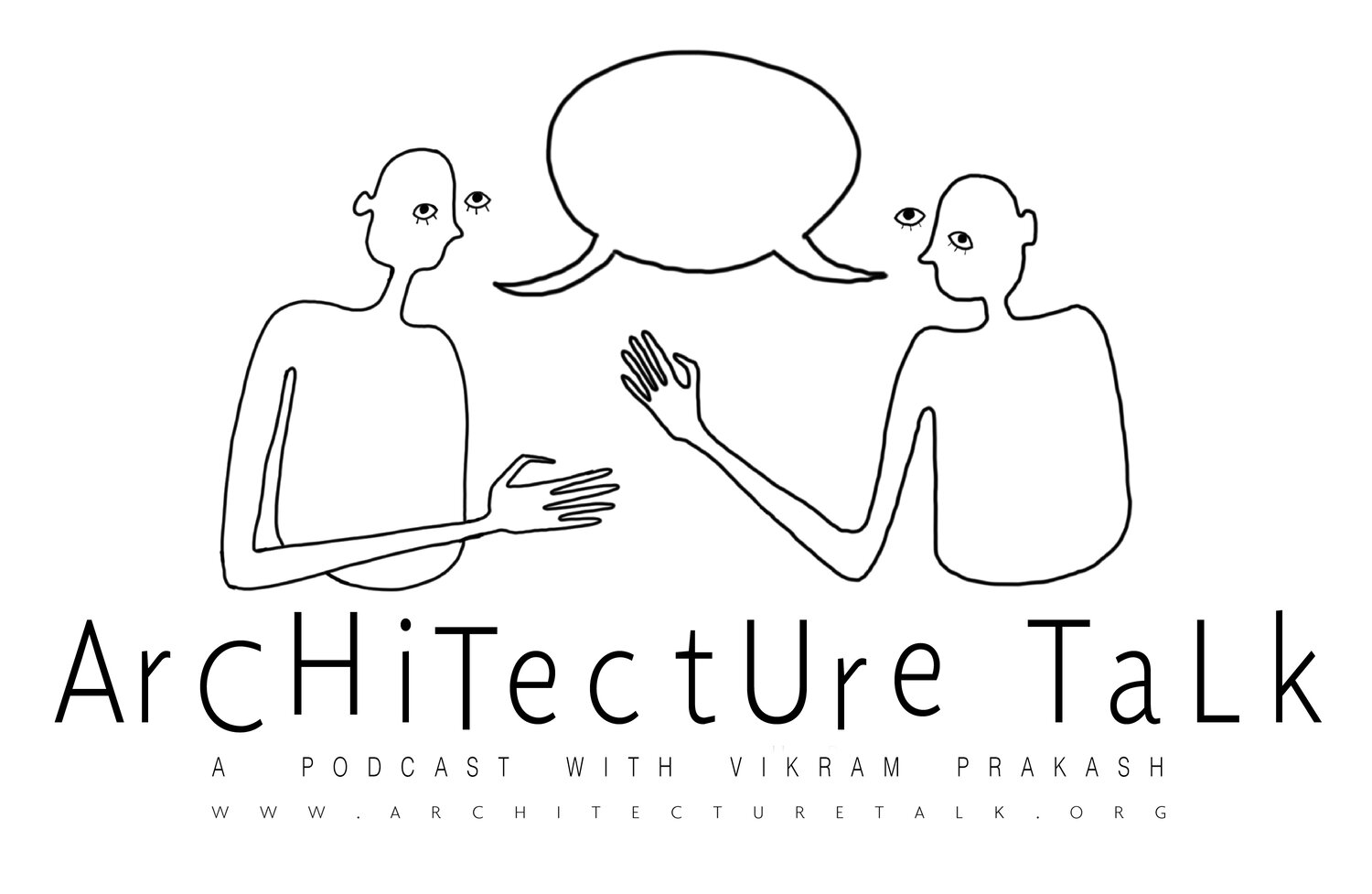123. A Fieldguide to Sub-Saharan African Architecture with Adil Dalbai and Livingstone Mukasa
Original Drawing by Tori Haynes
“There are a lot of parallels with India…What colonialism did to the Indian subcontinent was introduced to the world this very large entity (what we call India today) that exists out of numerous, distinct, diverse and dynamic sub-entities…the same can be said of Africa on a much larger scale…that partition of the continent to where it is today politically created an incredible set of problems many of which are still being wrestled with today. The theme of identity keeps coming up throughout the book in the architectures that we see. I think that’s important to note because we’re beginning to see a slight evolution from, say, what we saw throughout the 1950s and 60s when Modernism really took root and post-independence states were now looking for a means of expressing themselves as grownup countries and not merely as colonial vestiges. But now we are beginning to see a questioning amongst the younger generation of: Who are they?””
Livingstone Mukasa
How does the idea of a “Nation” come through in architectural language? Is there such a thing as a Nigerian architecture, for example? Are there national identifications visible in architectural makeup? On the other hand, how does architecture transcend borders? What is the status of Modernism in architecture in these various places? This week, we dive into these larger questions as we dissect the recently published series Sub-Saharan Africa Edited by Philipp Meuser, Adil Dalbai and Livingstone Mukasa
Timestamp Outline
Sub-Saharan Africa Edited by Philipp Meuser, Adil Dalbai and Livingstone Mukasa
Adil Dalbai begins by thinking through how he came to the project - his personal ties with the continent
Livingston Mukasa walks through how he became associated with the project and his upbringing all over the continent.
discussion about the structure of the volumes and why just Sub-Saharan Africa?
They were looking to create an overview of Sub-Saharan African architecture - they thought this line of study was missing from the architectural lexicon. One volume became multiple, divided by geographical regions (western, eastern, southern, and central Africa), but it kept growing and they eventually ended up with six volumes...plus a theoretical overview.
"...of course, architecture is not just buildings. It is much more than that." AD
“One of the intentions was to give local architects a platform from which they could publish their perspectives on the architecture in their backyard which resulted in a varied and diverse set of volumes and chapters.” LM
The editors walk us through their process of getting essays and information, first by networking with architects and authors from the various regions
"What was the criteria? What were you looking for?" VP
"The aim was to have a plurality of voices, but mostly to have each country covered by someone from the country or at least with profound knowledge of the country's architecture...a mosaic that goes far beyond just architecture..." AD
"It was important to try and have a balanced presentation [from many different multi-disciplinary backgrounds] as well as one that represented all facets of the architectural landscape." LM
"There are lots of contradictions in those texts - voices that disagree, or challenge, each other's thoughts." LM
Architecture and the question of diversity
"[Diversity] was certainly one of the goals...not to look at it through a single lens, particularly a western-framed lens...because that reduces the scope significantly" L
"I don't particularly like the term vernacular architecture because it only seems to be used in reference to architecture from certain geographic areas..." L
"We tried to give particular attention to what happened before contact with Europeans...we wanted to avoid making the case that history began when the first ships arrived from Europe. This is clearly not the case, so we tried really hard to focus on pre-contact history." L
“As a Europeanist, what would be the thing for me to learn about architecture in Africa that is not colonized by European thinking?” VP
“What did you learn about African architecture that was surprising?” VP
“Nations are a modern construct…and you used that to put it all together. Did you consider other organizational strategies?” VP
Discussion on the theorization of African architecture around language.
How does “the Nation” come through in its architectural language? Is there such a thing as a Nigerian architecture, for example? Are there national identifications visible in architectural makeup? On the other hand, how does architecture transcend borders?
“There are a lot of parallels with India…What colonialism did to the Indian subcontinent was introduced to the world this very large entity (what we call India today) that exists out of numerous, distinct, diverse and dynamic sub-entities…the same can be said of Africa on a much larger scale…that partition of the continent to where it is today politically created an incredible set of problems many of which are still being wrestled with today. The theme of identity keeps coming up throughout the book in the architectures that we see. I think that’s important to note because we’re beginning to see a slight evolution from, say, what we saw throughout the 1950s and 60s when Modernism really took root and post-independence states were now looking for a means of expressing themselves as grownup countries and not merely as colonial vestiges. But now we are beginning to see a questioning amongst the younger generation of: Who are they?”” LM
Discussions on the forces that affect architectural design
Discussion on Modernism and its legacy.
“I wonder, what is the status of Modernism today? In India, Modernism is being challenged…as the last folly of a colonial mindset.” VP
Future speculation on the relationship between China and African Nations.







